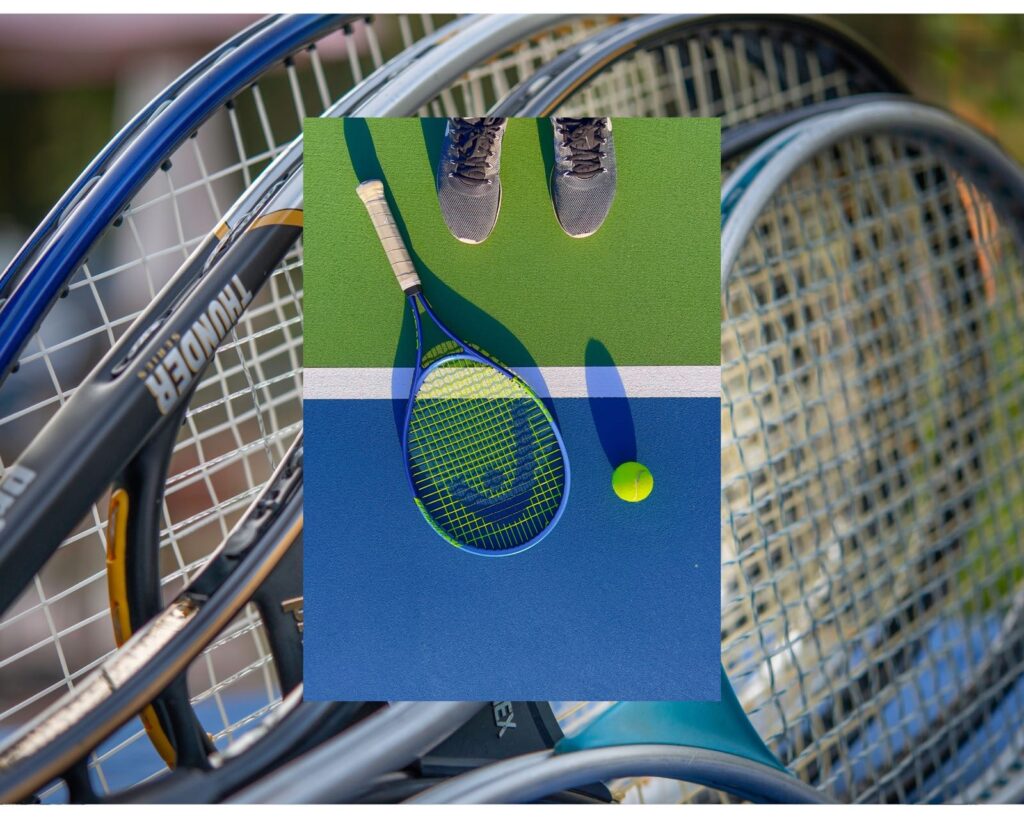
How to select best tennis racket for beginners
- Tennis
- January 6, 2024
There are a variety of tennis rackets available in the market. If you are someone who is just starting out and is unfamiliar with the differences between these varieties, it must be a daunting task to select the racket which is best for your needs. Here, we will try to explain the differences between these varieties of tennis rackets and how to select best tennis racket for beginners.
How to select best tennis racket for beginners
1. Different types of String patterns
Tennis rackets have two primary string patterns: open and closed.
- Open String Pattern: This type features larger gaps between strings. More space between strings means the strings move more, allowing for increased ball bite, spin potential, and power. Players who rely on spin often prefer open string patterns as they generate more spin due to the greater string movement upon ball contact.
- Closed String Pattern: In this pattern, the strings are closer together, resulting in fewer gaps. This configuration provides better control, precision, and durability. It minimises string movement, offering a more consistent and controlled response. Players seeking more accuracy and control often prefer rackets with closed string patterns.
Some rackets have variations within these patterns, offering a compromise between spin and control. The choice between open and closed string patterns largely depends on a player’s style, preference, and the desired balance between power, spin, control, and feel during play.
2. Materials used for making
Tennis rackets are crafted from various materials, each offering unique characteristics affecting performance. The primary materials used in racket construction include:
- Graphite: Highly popular among professional players and enthusiasts, graphite provides stiffness, stability, and excellent control. It allows for customisable construction, enabling manufacturers to blend graphite with other materials for specific performance attributes.
- Carbon Fiber: Similar to graphite, carbon fiber enhances racket stiffness, strength, and power. It’s often used alongside graphite to reinforce the frame and improve responsiveness.
- Aluminium: Commonly found in beginner or recreational rackets due to its affordability, aluminium provides lightweight construction, forgiveness on off-center hits, and a comfortable feel. However, it might lack the control and power of more advanced materials.
- Titanium: Used to reinforce frames, titanium adds strength and durability to rackets. It’s often combined with other materials like graphite to enhance performance.
- Composite Materials: Manufacturers blend various materials (like graphite, fiberglass, or Kevlar) to create composite rackets. These combinations allow for customised characteristics, balancing features like power, control, and vibration dampening.
- Boron: Occasionally used in racket construction for its high stiffness and strength, boron is combined with other materials to enhance racket performance for advanced players.

3. How to select best tennis racket for beginners ?
The choice of material impacts a racket’s weight, stiffness, power, control, and feel. Advanced players might prefer the stiffness and control of graphite-based rackets, while beginners might opt for aluminium or composite rackets offering forgiveness and comfort.
- Grip Size: A comfortable grip is crucial. Try different sizes to find what feels best; it should allow you to comfortably hold the racket without straining your hand.
- Head Size: Larger heads offer more power and forgiveness on off-center hits, while smaller heads provide more control. Choose based on your skill level and playing style.
- Weight and Balance: Rackets vary in weight and balance (head-heavy or head-light). Lighter rackets offer more manoeuvrability, while heavier ones provide stability and power. Balanc e affects how the racket feels during play.
- String Pattern: Open string patterns provide more spin, while closed patterns offer control. Consider your play style and preference for spin or control.
- Material and Construction: Graphite, aluminium, and composite materials are common. Advanced players might prefer graphite for its stiffness and control, while beginners might opt for aluminium for its affordability and forgiveness.
- Player Skill Level: Consider your skill level; beginners might benefit from larger heads and more forgiving rackets, while advanced players might seek more control and precision.
- Feel and Comfort: Test the racket if possible to assess how it feels during swings. It should feel comfortable and suit your playing style.
- Brand and Model: Different brands offer various technologies and designs. Some players prefer certain brands due to personal preferences or endorsements.



